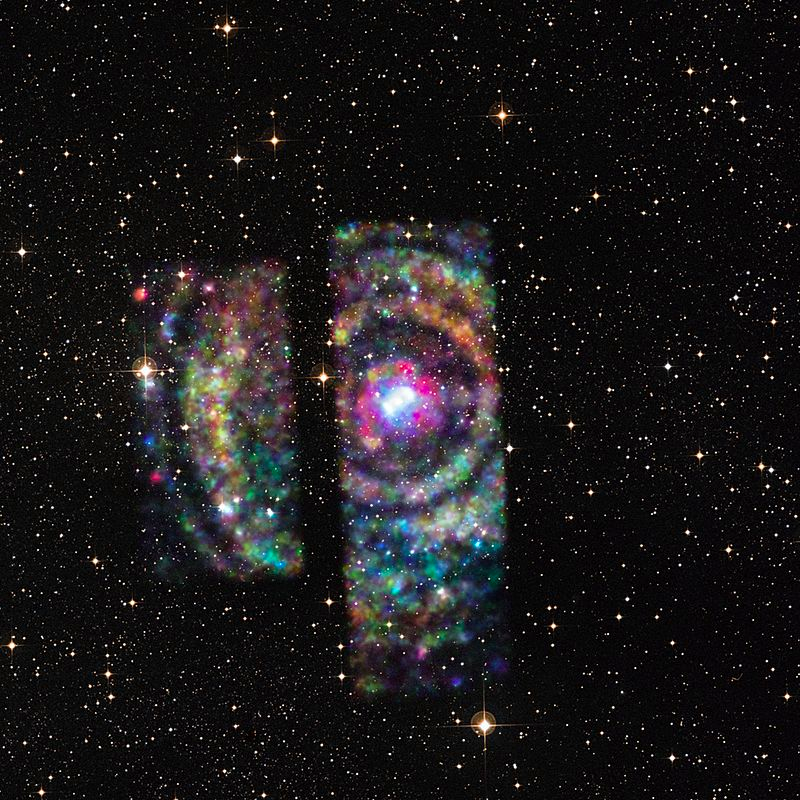A new field of science is born – astromaterial science. First mentioned in today’s paper, this scientific field studies materials of astronomical objects that are denser than materials commonly found on Earth.
Scientists, M. E. Caplan and C. J. Horowitz, introduce the field of astromaterial science, starting with two major materials of interest, Coulomb crystals and nuclear pasta. Both of these materials occur in a particularly unique celestial body – the neutron star. Neutron stars are the massively dense remnants of supernovae. Supernovae mark the dramatic end to a giant star’s life. As these massive stars grow to enormous sizes, then the fusion of the stars begin to fail, and the stars explode.
During a supernova explosion, most of the mass of the star is ejected into the vastness of space. However, the core of the star stays behind and collapses on itself to form a new, dense star – the neutron star. Neutron stars are named such because they are made of neutrons. Before the supernova, the bright shining star is made of helium, hydrogen, and many other familiar elements. After the supernova has blown off much of the star’s mass, the collapse of the core crushes the remaining protons and electrons under such great pressure that they form a sea of neutrons. As a result, the density of a neutron star is immense; neutron stars can have as much mass as 1.5 Suns, but be only 12 miles across. For reference, that means 1 teaspoon of neutron star weighs 6 million tons!
Today’s paper highlights neutron stars as an interest to the new field of astromaterial science. This is an interest because the crust of a neutron star is made of something called Coulomb crystal. Coulomb crystal is the strongest material to be discovered; it is a billion times stronger than steel. These crystals are made of neutrons but are not at the point of neutron saturation. Neutron saturation occurs when neutrons cannot get any closer together without compromising the structure of the neutrons themselves. Because the Coulomb crystals still have a bit of wiggle room with the neutrons, there are electrons that move throughout the crust. Remember, there are few electrons, because most of the electrons were fused with the protons to make the neutrons. Due to the rarity, the electrons are called an electron gas, because the electrons are so few and far between. The electron gas combined with high number of neutrons makes up the crust of the neutron star. This state of matter, the Coulomb crystal, can only occur at the gelid temperatures of space. Thus, this astromaterial can only exist as the crust of the neutron star.
While Coulomb crystals sound like bizarre phenomena, the deeper innards of the neutron star also theorize a new type of astromaterial. This material is not exposed to the frigidness of space and is at the point of neutron saturation. The neutrons are as close together as physics possibly allows. As neutrons shift to attempt to relieve the immense stress, strange patterns of neutrons form. These patterns are called “nuclear pasta”, for their resemblance to Italian pastas.

Image Source: Figure 3, Astromaterial Science and Nuclear Pasta
These condensed matter pasta states are caused by the neutrons clumping (gnocchi) to reduce the pressure around them, or producing long tubes (spaghetti) to allow stability under these immense conditions.
While nuclear pasta has been theorized, simulated, and studied previously, these unusual states of condensed matter have not be observed. Neutron stars are small and hard to see with our telescopes. Even after they are seen in the sky, it is not clear how to determine the state of nuclear pasta within by observing the neutron star through a telescope.
Caplan and Horowitz state that rotating neutron stars can be the source of continuous gravitational waves (all gravitational wave detections science has seen thus far have been of black holes crashing into each other). If there are deformities on the surface of the neutron star, “mountains”, and the neutron star is rotating fast enough, this phenomenon can cause gravitational waves to ripple through space every time the neutron star rotates. Based upon the magnitude, frequency, and irregularities in the detected gravitational waves from the neutron star, the scientists postulate that the waves can give insight into the make-up of the nuclear pasta.
So, the field of astromaterial science is born, and LIGO and Virgo should keep listening for the gravitational waves sliding past Earth, in hopes of discovering more about space pasta and star crusts.


